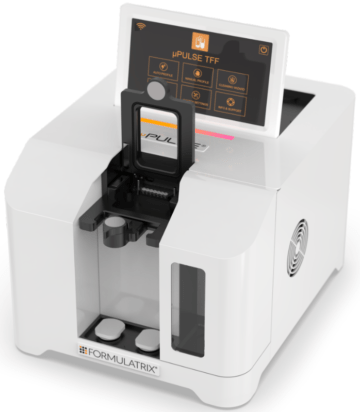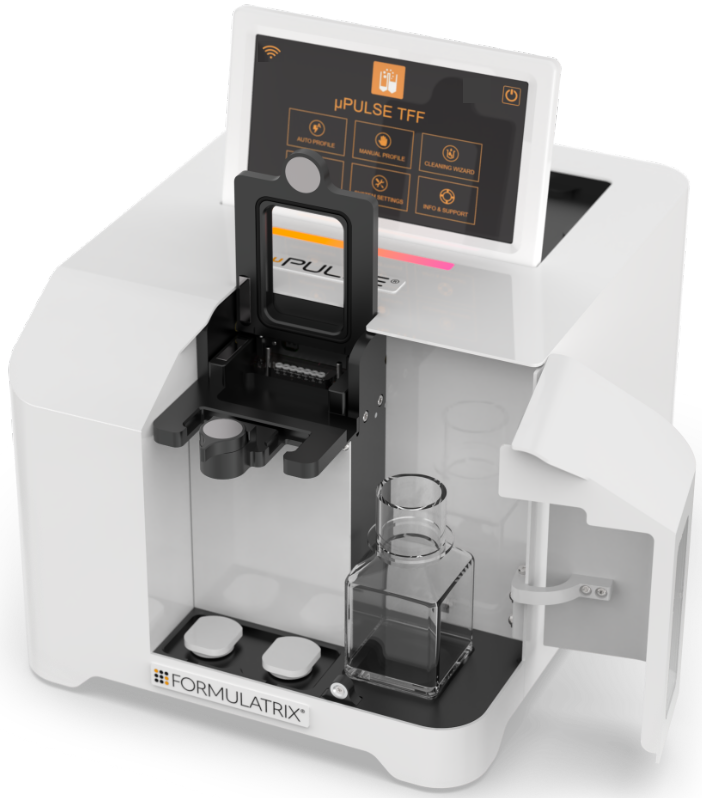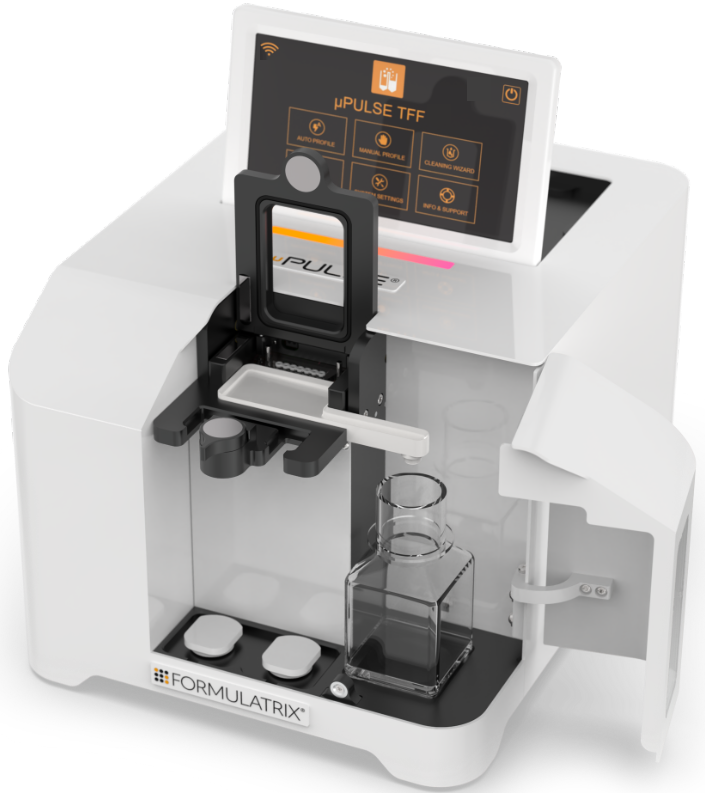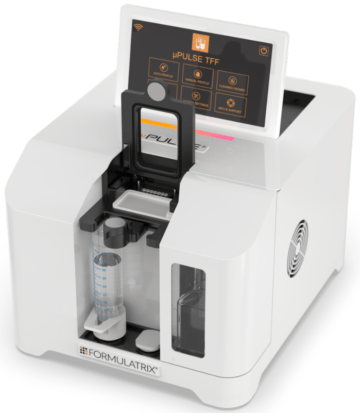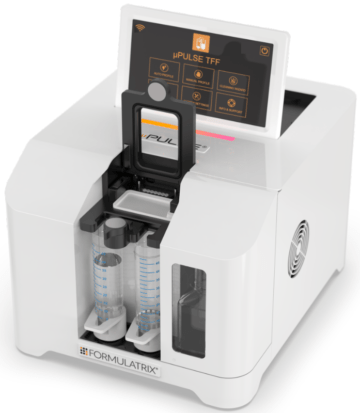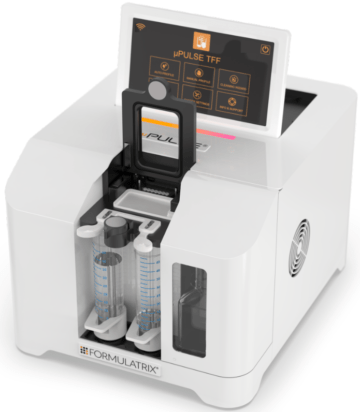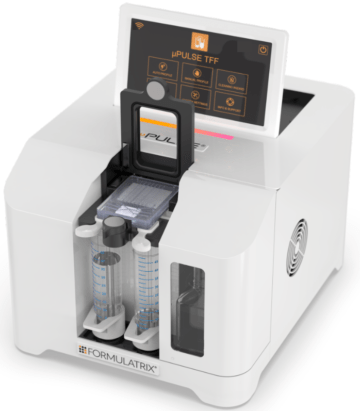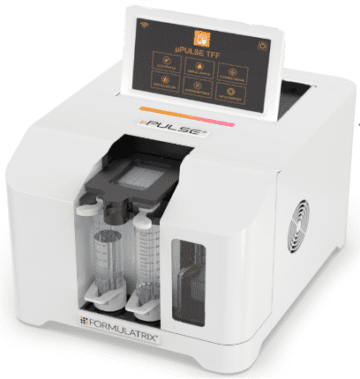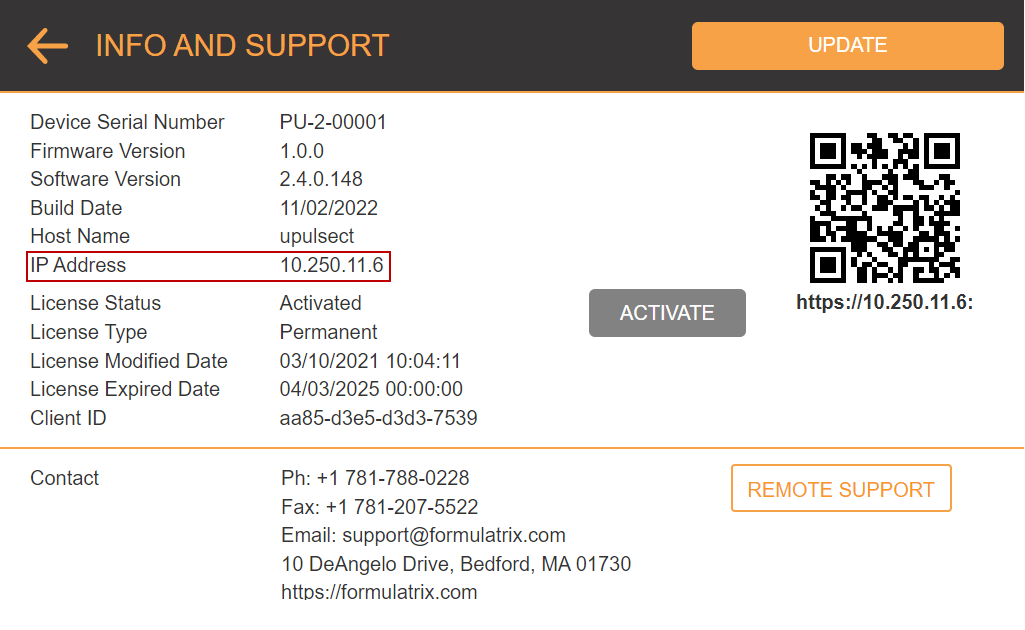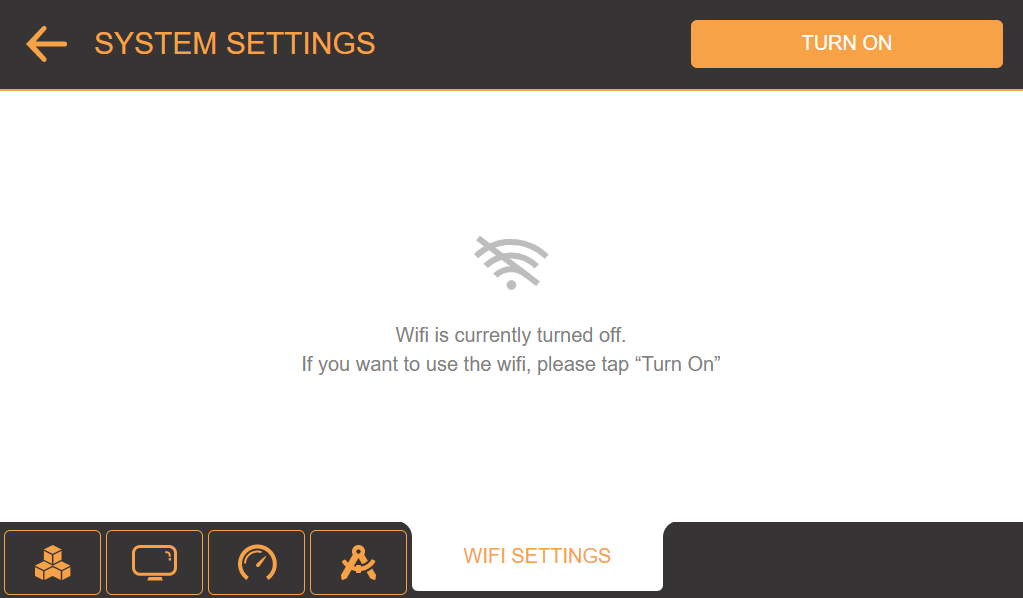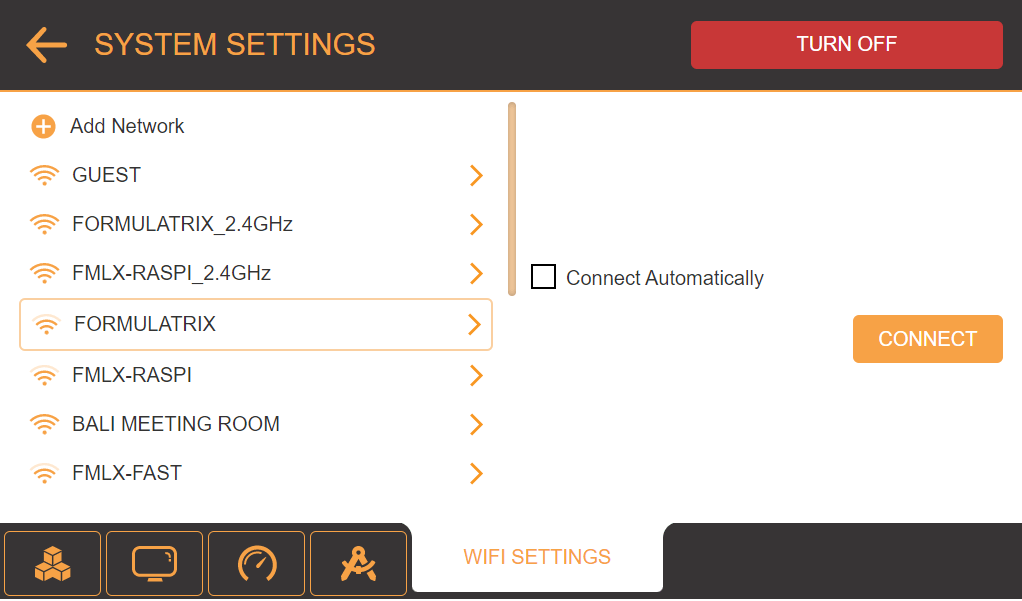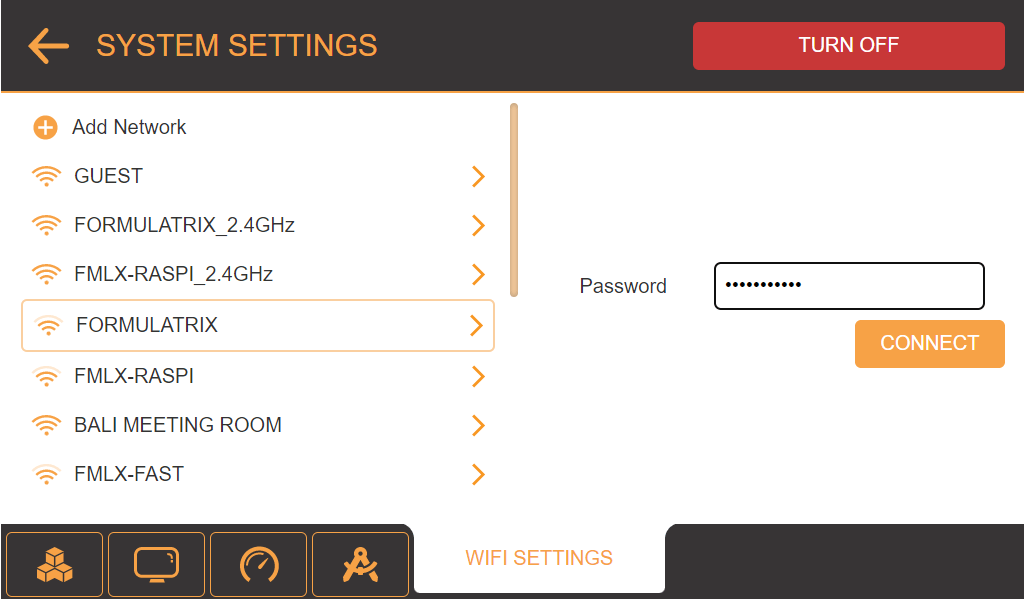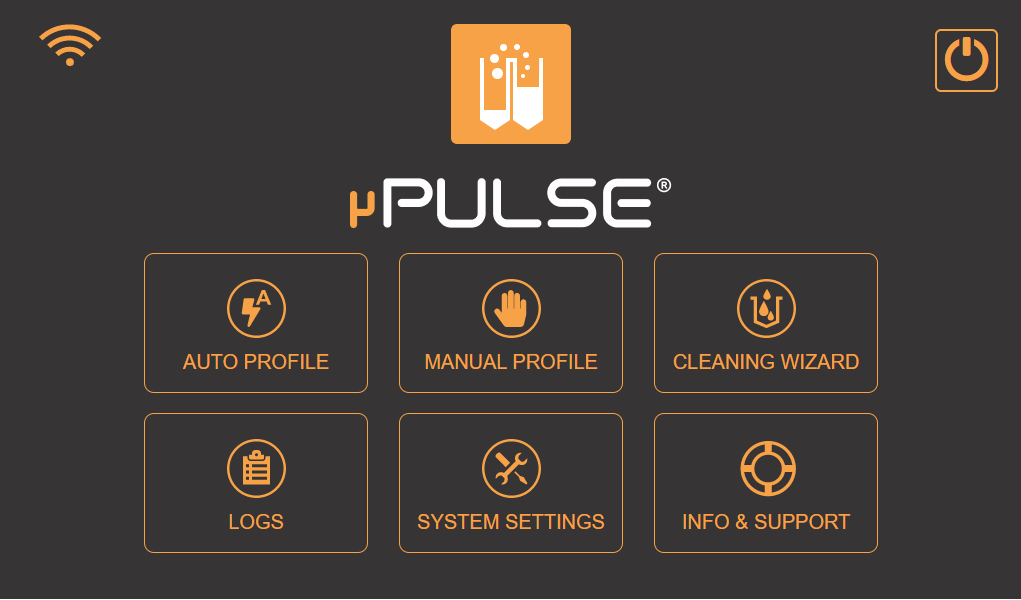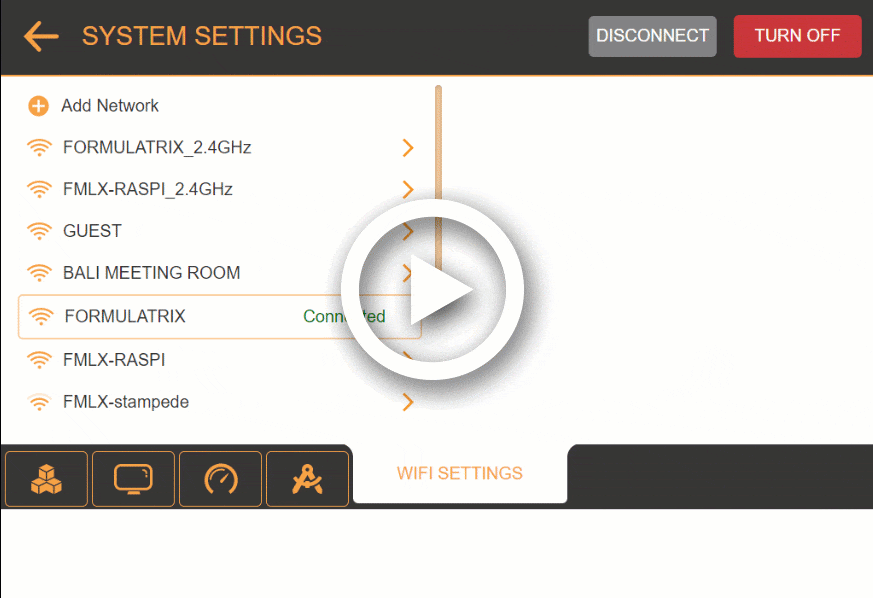Setting Up µPULSE
Both the µPULSE instrument and software need to be set up before you can run a profile. If you’re not familiar with the components, see Hardware Overview for more information. Follow the instructions below to set up the hardware before creating and running a profile.
To set up the µPULSE hardware:
- Connect the µPULSE to a power outlet using the power cable.
- Find the power button located on the back of the µPULSE hardware and turn it on.
- Open the chip cover.
- Open the permeate door, insert the permeate bottle, and then insert the permeate collector into the slot over the tubes.
- Fill the sample tube with the sample or your carrier reagent. This tube should go in the left input.
- Fill the buffer tube with the buffer of your choice. This tube should go in the right input.
- Put the transfer tubing into position, make sure the 1/16" tubings are inside the tubes.
- Insert the desired chip with the diaphragm side facing the front of the instrument. µPULSE filter chips come in six membrane cutoff sizes: 5, 10, 30, 50, 100, and 300 kDa. Choose the chip that corresponds to the size of the sample you are using. Typically, you should use a cutoff size that is less than half the size of the sample or target of interest you want to concentrate.
- Press down the chip cover until the latch has caught. If there is resistance, please make sure that the transfer tubing and filter chip are seated properly.
After setting up the instrument, connect it to a network by following the options below.
Connecting to an Ethernet Cable:
- Plug in the ethernet cable to the ethernet port on the back of the µPULSE instrument.
- Go to the INFO AND SUPPORT menu. The IP Address will be shown to indicate that µPULSE device is connected to the network.
- Select the desired network from the list. Then, tap CONNECT.
Tip: Tick the Connect Automatically checkbox to automatically connect to this network in the future.
- Enter the password in the available field.
- Tap the CONNECT button and wait while the system connects to the WiFi network.
Note: If the password is incorrect, the software will show an error notification and clear the password field.
- When the system is connected to the WiFi network, a green Connected indicator will be displayed next to the selected WiFi network
- On the Home Screen, the WIFI SETTINGS button will turn to orange.
Related Topics
Updated on April 18, 2024
FORMULATRIX® is proudly powered by WordPress
